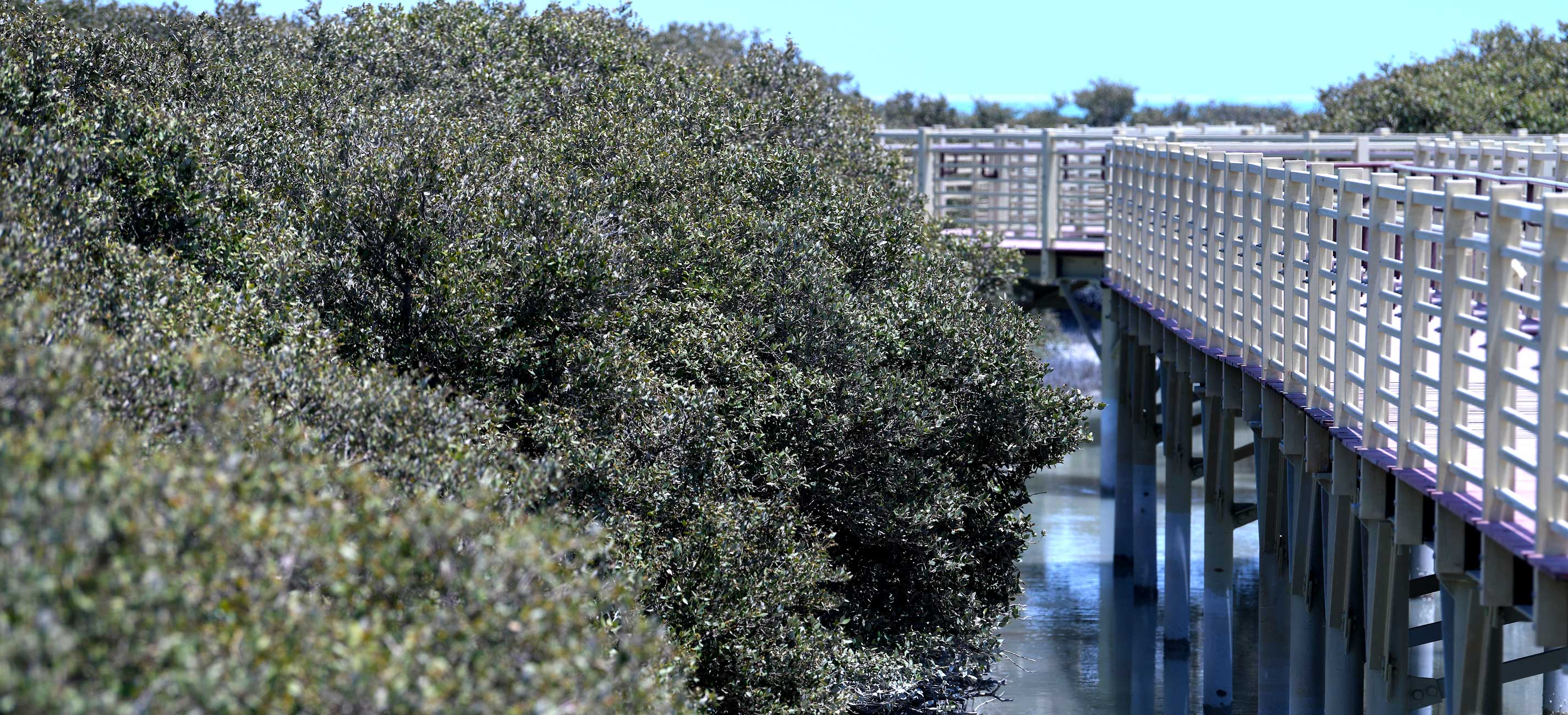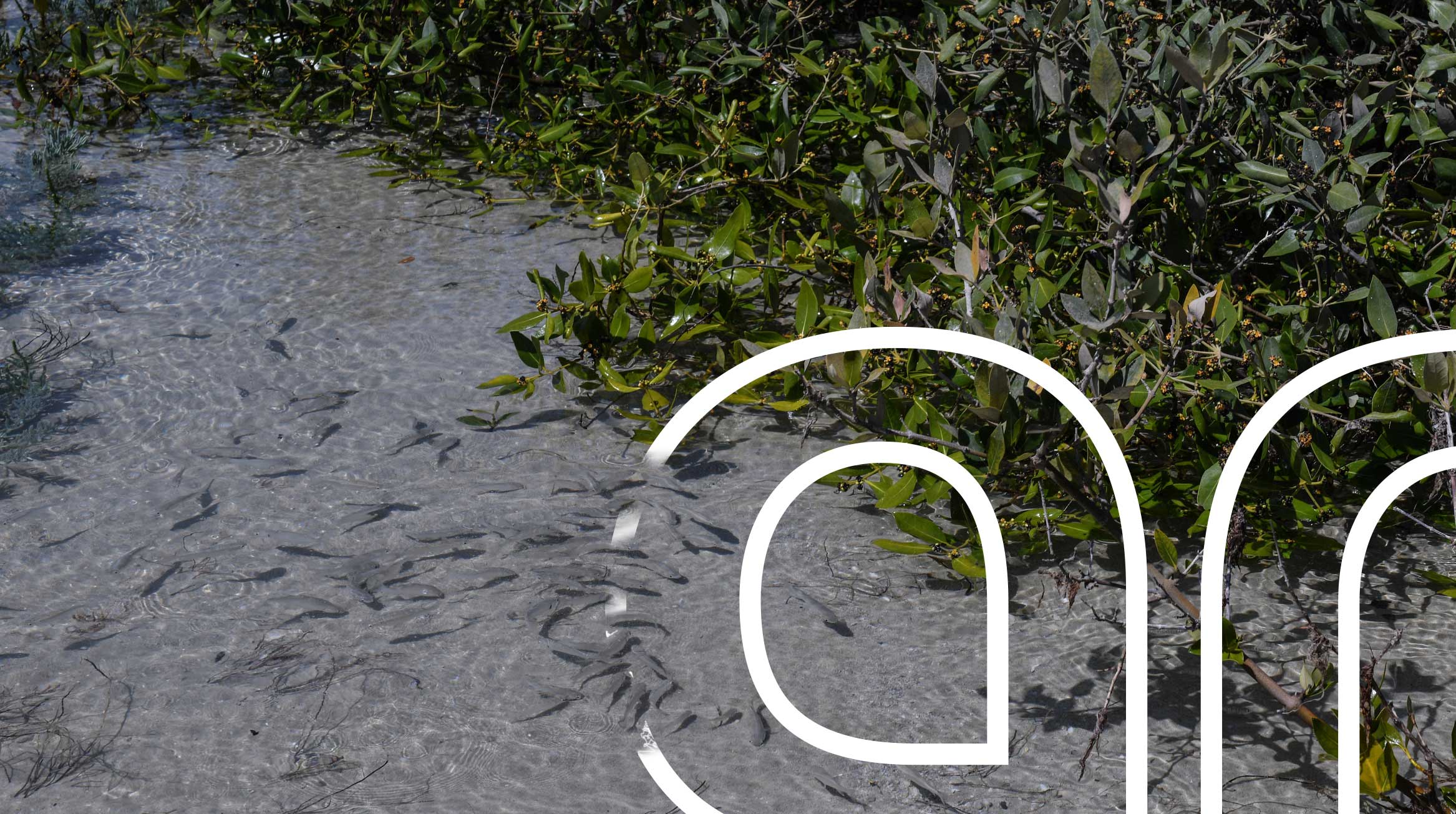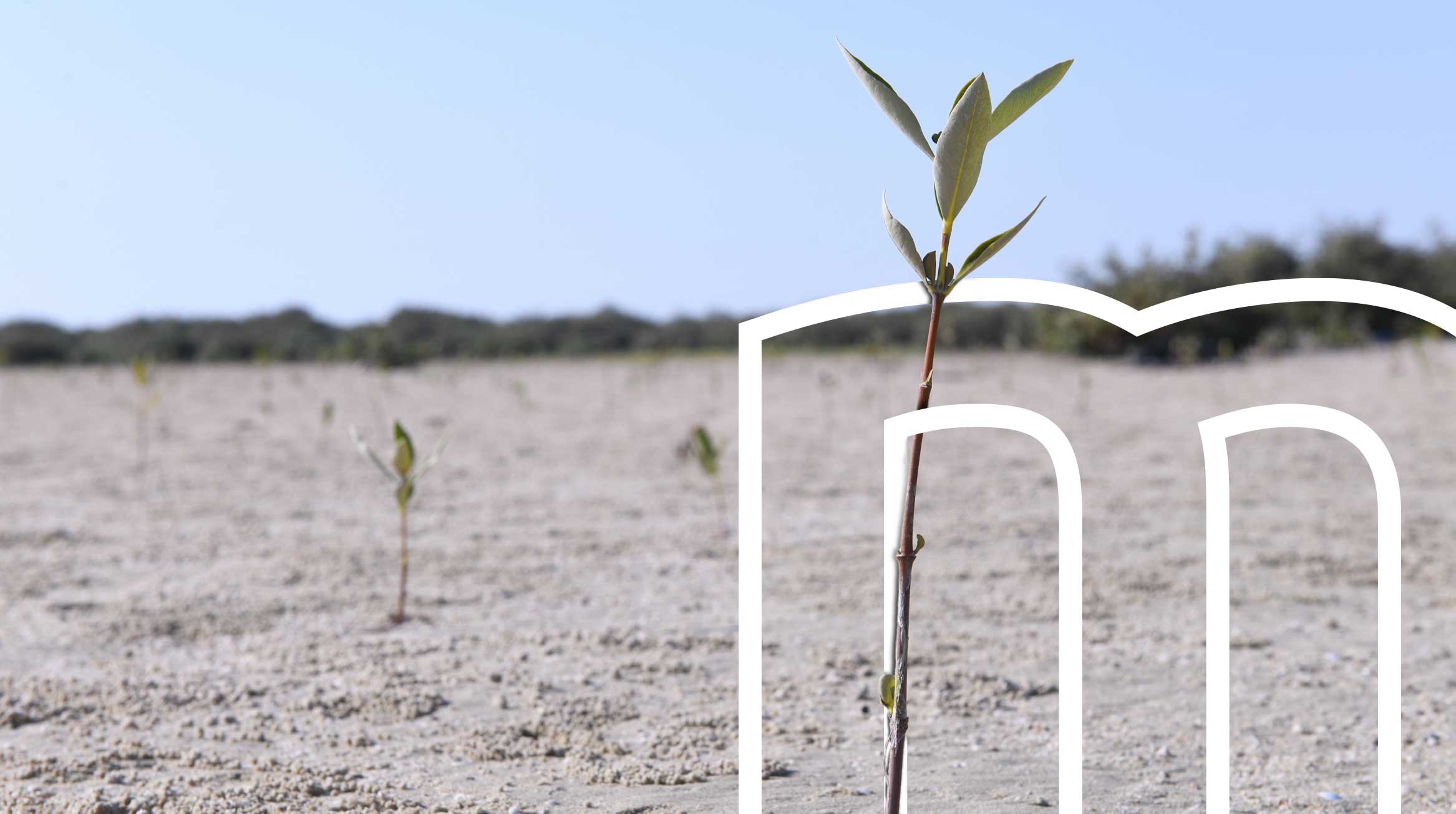2 million mangroves added to the carbon front line
Working with nature to combat climate change.

- Nature-based climate change solutions preserve livelihoods
- Saudi Arabia is working to reverse desertification
- Mangroves are a powerful solution for arid nations
Tangled tightly with human poverty is ecological degradation. Damaged ecosystems put pressure on the ability of lands and seas to support people.
Paramount for our carbon-constrained planet is retaining, building, and restoring sustainable environmental, social, and economic communities. Investing in nature-based climate change solutions lifts people out of poverty, which in turn preserves biodiversity.
Reversing the downward desertification spiral
Saudi Arabia is an ancient land fringed by spectacular seas on its east and west. No rivers flow; rainfall is sporadic; and summer temperatures are high.
Despite the rarity of water, nature lives in this imposing but fragile environment where many native plants and animals are vulnerable to extinction. The Kingdom is home to native tree species found nowhere else on Earth.
Deforestation, an assault on nature, often exacerbates ecological scarcity and poverty. Saudi Arabia, aligned with its Saudi Vision 2030 transformational program, has activated multiple native tree-planting programs along its coastal plains, wide-open deserts, and mighty mountains.
Alongside 197 parties, Saudi Arabia signed a United Nations convention on combating desertification. Achieving neutrality in land degradation is an essential element toward reaching the “Sustainable Development Goals” adopted by all United Nations member states in 2015 to protect the planet and end poverty by 2030.
Planting mangrove forests
Prominent, and particularly planet-vital, among the planting programs is Aramco’s restoration of mangrove forests to the Kingdom’s white-sand seashores. The program is a living defense against desertification, and retains and enhances livelihoods.
Significantly, the restoration provides a massive natural sink for carbon dioxide (CO2). Aramco commenced transplanting its first mangrove seedlings in 1993.
The initiative was part of a study commissioned with the Research Institute at King Fahd University of Petroleum and Minerals to re-establish mangrove forests along the shores of the Arabian Gulf. The Company also partnered with the National Commission for Wildlife Conservation and Development as well as the Ministry of Environment, Water and Agriculture.
All partners set out to determine whether mangroves could be successful. The ad-Dahna desert’s northern seashores now have well-established mangrove forests.

Aramco’s restoration of mangrove forests helps create a living defense against desertification, and retains and enhances livelihoods.
No need to water
Mousa O. Alharthi bends down to finish planting a mangrove sapling into its new Arabian Gulf home of ebbing tides, taunting coastal breezes, and summer heat. The Aramco environmental engineer’s hands gently smooth the coarse creamy-gray sand granules, sodden with seawater, to create a level and protective surface that will nurture the 25 cm Avicennia marina mangrove after its 60 km northern journey from an Aramco nursery in Rahima Bay.

Left : Mangrove seedlings at the Aramco nursery in Rahima Bay. Right : Aramco has been restoring mangrove forests for almost three decades.
The tree, with upward-pointing emerald green leaves, is one of a company-record 2 million new mangroves Aramco deployed during 2020 as part of its ongoing commitment toward turning the tide on climate change. The addition of 2 million trees brings to more than 4 million the number of mangroves planted by the Company since it began restoring mangrove forests almost three decades ago.

Left: Aramco environmental engineer Mousa O. Alharthi says mangroves are a powerful solution for arid Saudi Arabia. Right: Alharthi finishes planting a mangrove sapling.
Mangroves are particularly suited to the Kingdom’s thirsty desert shorelines. Despite the Gulf waters having a higher salt content than most oceans and seas around the world, the plantings have a strong 90% survival rate, resiliently thriving in extreme variations of water temperatures and dissolved oxygen.
“Although Saudi Arabia has sporadic rainfall and sparse vegetation, it is surrounded by seas on both sides, making mangroves ideal as a species to increase natural forests in the Kingdom, because you don’t need to water them,” says Alharthi. “They live in conditions that no other tree can, connect the land and the sea, and are an important nature-based solution towards adapting to and mitigating climate change.”
Mangroves: front-line climate warriors
Quickly
sequester more carbon for longer than land-based trees
Only
tree able to live in salt water
Absorb
air pollutants and purify water by absorbing impurities and heavy metals
Prevent
erosion and stabilize coastlines
Provide
abundant habitats for coastal fauna and flora
Nature’s powerful ecological soldier
Mangrove forests are one of nature’s most powerful ecosystems, providing life-sustaining habitats for plants, birds, nursery areas for marine life, and supporting local communities relying on these productive ecosystems for their food security and well-being. The trees’ complex and deep-descending root structures prevent shoreline erosion from waves and heavy storm surges, providing adaptation to climate change impacts.
When compared to other trees, mangroves have an extraordinary ability to remove CO2 quickly from our planet’s atmosphere. Studies show mangroves sequester carbon many times faster, and for longer durations, than land-based forests.
Evaluated against most tropical land forests, mangroves store up to five times more carbon. Aramco estimates an Avicennia marina sequesters up to 1.5 metric tons of carbon over its average 60-year lifetime.

Evaluated against most tropical land forests, mangroves store up to five times more carbon.
Planet, people, and prosperity
For more than a century, carbon has been a primary component of the energy that has lifted billions of people out of poverty. The paradox confronting the energy industry and the world’s governments is ensuring access to affordable energy, particularly in the developing world, while mitigating the threat of climate change.
From shifting weather patterns threatening food production, to rising sea levels, the impacts of climate change are global in scope and unprecedented in scale. Regenerative and protective ecology tackles climate issues.
Healing nature with nature delivers spectacular solutions for the planet, people, and prosperity.



